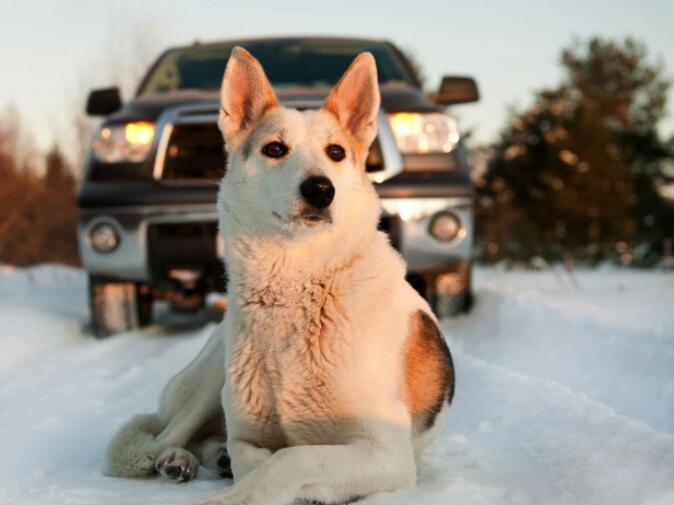Service dogs play a crucial role in the lives of many individuals with disabilities, providing not only assistance with daily tasks but also emotional support. The United States has several federal laws that define service dogs and outline their rights and responsibilities. These include the Americans with Disabilities Act (ADA), the Fair Housing Act (FHA), and the Air Carrier Access Act (ACAA).
Understanding Service Dogs: Types and Legal Protections
The ADA defines service dogs as animals “trained to do work or perform tasks for people with disabilities.” This includes physical tasks like opening doors or retrieving dropped items, as well as sensory tasks such as guiding a visually impaired person or alerting a hearing-impaired person to sounds. Under the ADA, service dogs are allowed in all areas accessible to the public, including government buildings, businesses, and nonprofit organizations.
The FHA extends these protections to housing, requiring landlords to make reasonable accommodations for tenants with disabilities who have service dogs. This may include waiving pet fees or allowing dogs in no-pets policies.
The ACAA further ensures that airlines recognize service dogs and allow them on flights within and from the U.S. without any additional charges or restrictions.
There are various types of service dogs, each trained to assist with specific disabilities. Guide dogs help the blind or visually impaired navigate their environment. Autism dogs assist those on the autism spectrum to manage daily activities and disrupt repetitive behaviors. Hearing dogs alert deaf or hard-of-hearing individuals to important sounds. Medical alert dogs can detect changes in their handler’s body that indicate an impending medical crisis. Mobility assistance dogs aid those with mobility issues, while psychiatric dogs provide support and comfort to individuals with mental health disabilities.
It’s essential to remember that service dogs are working animals, not pets. They undergo rigorous training to perform specific tasks that enable their handlers to live more independently. Their roles are vital, and the laws protecting them reflect the importance of their contributions to the lives of those they serve.
Understanding the Different Types of Service Dogs
Service dogs are not just man’s best friend, but also lifelines for those with disabilities. These highly trained animals come in various types, each specifically trained to cater to different needs and conditions. From physical ailments to mental health disorders, service dogs play an integral role in enhancing the quality of life for individuals with disabilities.
It is crucial to recognize that service dogs are working animals, not pets. They undergo rigorous training to perform tasks that enable their handlers to live more independently. Let’s delve into the different types of service dogs and their roles.
Guide Dogs: The Pathfinders for the Visually Impaired
Guide dogs are sensory assistance dogs for the blind or visually impaired. They navigate the physical world on behalf of their handlers, leading them around obstacles, stopping at curbs and steps, and waiting for traffic signals. Notably, guide dogs are trained to independently assess situations for safety, meaning they will disobey unsafe commands. For instance, a guide dog will refuse to step into the street if there is oncoming traffic.
Autism Dogs: Companions for Emotional Support
Service dogs for individuals with autism are trained to assist in daily activities, helping their handlers achieve greater independence. These dogs are trained in tasks similar to those of service dogs for other sensory processing disorders. However, they also learn skills specific to autism, such as disrupting repetitive behaviors or ‘meltdowns’ and tethering to prevent wandering.
Hearing Dogs: Sound Guardians for the Hearing Impaired
Hearing dogs serve as ears for people who are deaf or hard of hearing. They alert their partners to sounds like smoke alarms, doorbells, alarm clocks, ringing telephones, or a child crying. These dogs can also be taught American Sign Language for non-verbal individuals, further enhancing their communication abilities.
Medical Alert Dogs: Early Warning Sentinels
Medical alert dogs are trained to sense the onset of specific medical crises before they occur. They can detect subtle changes in their handler’s odor, respiration, and behavior, indicating the early stages of events like epileptic seizures, diabetes-related blood sugar fluctuations, and psychiatric episodes.
Mobility Assistance Dogs: Enablers for Physical Independence
Mobility assistance dogs are trained to help individuals with mobility issues. They can open doors, retrieve objects, and serve as a brace for those with balancing difficulties. Additionally, they can turn lights on and off and find help when needed. By law, individuals requesting a mobility service dog must have a developmental, physical, or psychiatric disability.
Psychiatric Dogs: Emotional Companions for Mental Well-being
Psychiatric service dogs provide support, comfort, and protection to individuals with mental health disabilities. Their tasks include grounding and reorienting a handler during anxiety attacks, conducting room searches for someone with PTSD, and providing gentle touch or pressure to calm and comfort their handler.
PTSD Dogs: Allies in the Fight Against Trauma
PTSD service dogs are specialized psychiatric service dogs trained to assist individuals living with PTSD. They alleviate their handlers’ anxiety and distress, waking them from night terrors and nightmares, distracting them from triggering stimuli, bringing medication on a regular schedule, and leading them to safety during panic or anxiety attacks.
In conclusion, service dogs come in various forms, each tailored to meet the unique needs of individuals with disabilities. From guide dogs for the visually impaired to PTSD dogs for trauma survivors, these remarkable animals enhance independence and improve the quality of life for their handlers. It is essential to remember that they are working animals, dedicated to serving their handlers with love and loyalty.









